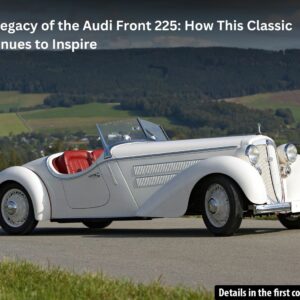In the 1950s, when innovation was at its peak, a bizarre and ambitious all-terrain vehicle called “The Rhino” emerged. Designed by the visionary Greek-American inventor Elie Aghnides, this five-ton machine was unlike anything seen before. With enormous hollow wheels, amphibious capabilities, and the ability to traverse extreme terrains, the Rhino pushed the boundaries of engineering. Though it never saw mass production, its story remains a testament to bold experimentation and the spirit of invention. Let’s dive into the fascinating world of the Rhino, a vehicle that could’ve changed the way we think about off-road adventures.
The Design and Features of the Rhino
What set the Rhino apart from other vehicles was its sheer size and the innovation embedded in its design. The Rhino was massive, weighing in at five tons. Its most eye-catching feature was its slanted front wheels, each measuring an impressive six feet in diameter and weighing 1,500 pounds. These giant wheels were not solid but hollow, a design choice that allowed the Rhino to float on water, making it an amphibious vehicle capable of traversing lakes and rivers.

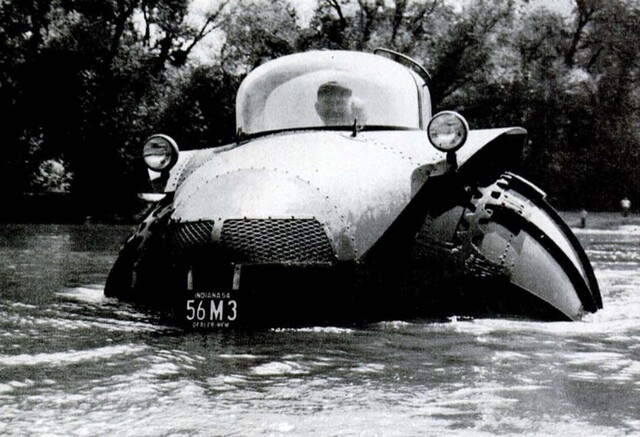
The vehicle was powered by a 110-horsepower engine, which propelled the Rhino to speeds of up to 45 miles per hour on solid ground. However, when it encountered water, the speed drastically dropped to just 5 miles per hour, a limitation that the design team hoped to improve with future engine upgrades. Despite its cumbersome appearance, the Rhino was not just an overgrown tank; it had been crafted with practicality in mind. With a low center of gravity, it could tilt up to 75 degrees without tipping over, making it an extremely stable vehicle in rough terrain.
The Rhino’s body was built from aluminum, welded to a steel frame, further reinforcing its sturdy structure. This combination of lightweight aluminum and steel allowed the vehicle to maintain its structural integrity while remaining durable enough to handle the stress of tough environments.
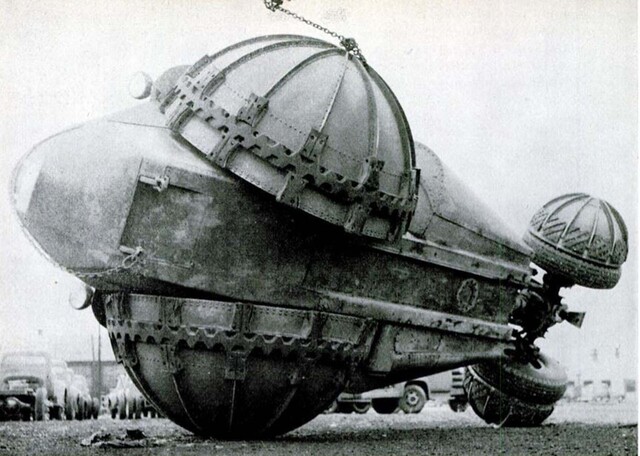
Video
Watch Five Ton Rhino: An All Terrain Tank (1954) | British Pathé to explore this unique experimental vehicle designed for tough terrains. A fascinating piece of automotive history!
The Rhino’s Performance: A Machine That Conquered All Terrains
When it came to performance, the Rhino did not disappoint. It was designed to travel across a variety of terrains with remarkable ease. Whether on deep sand, thick mud, or slippery snow, the Rhino’s massive wheels allowed it to glide over surfaces that would have bogged down conventional vehicles. On highways, it could reach speeds of 45 miles per hour, making it fast enough for long stretches of road travel. Its ability to cross water, however, was a unique feature, and although its speed on water was limited to just 5 miles per hour, it still performed admirably as an amphibious vehicle.
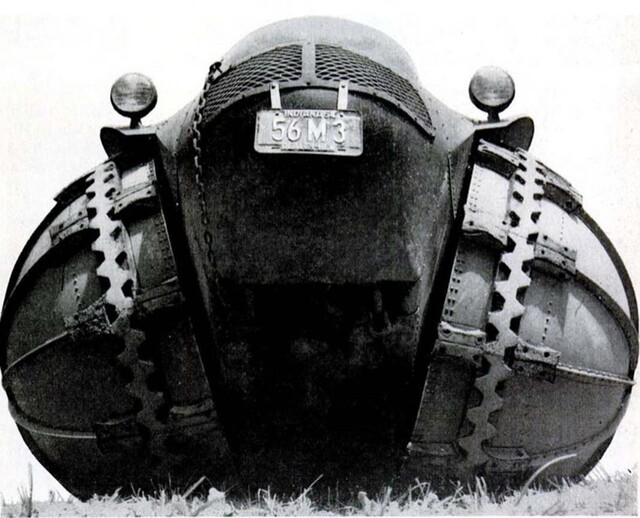
The Rhino’s amphibious capabilities were crucial for traversing the remote and inaccessible terrains of Alaska and Canada. Aghnides had envisioned this machine as an ideal solution for military patrols or exploration in the vast, rugged wilderness of these regions. The vehicle’s combination of land and water capabilities made it an excellent candidate for diverse tasks in such harsh environments.
The Rhino’s Prototype: Built by Marmon-Herrington in 1954
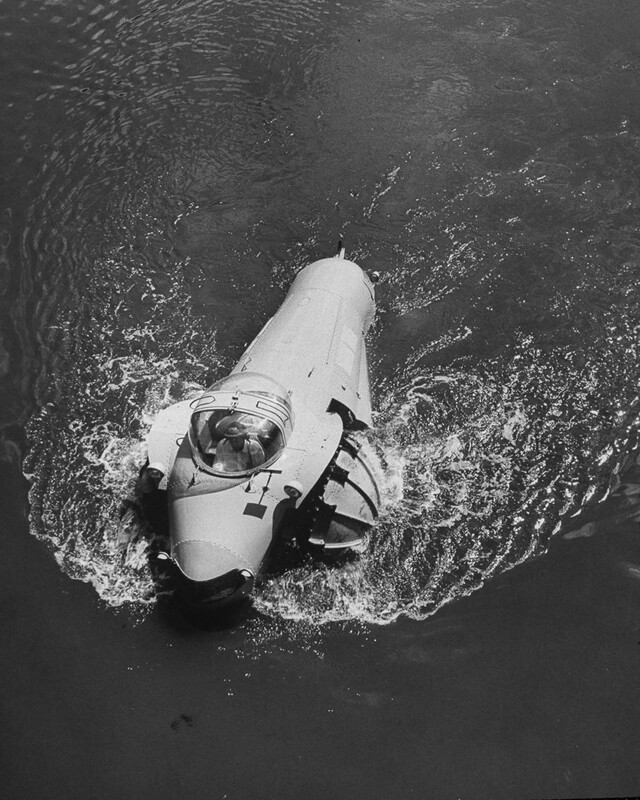
The concept of the Rhino came to life in 1954 when the prototype was constructed by the Marmon-Harrington Company in Indianapolis. While Aghnides had come up with the idea and design, Marmon-Harrington played a pivotal role in turning the concept into a reality. The prototype vehicle measured 19 feet in length, 9 feet in width, and almost 10 feet in height. It was truly an imposing presence, and the photos taken during testing show just how unusual the Rhino was compared to anything else on the road—or in the water.
The collaboration between Aghnides and Marmon-Harrington resulted in a vehicle that had the potential to change the way we think about all-terrain vehicles. However, despite the extensive testing and the promising performance results, the Rhino was never produced in large quantities. Its size, cost, and technical limitations proved to be insurmountable obstacles to making it a viable option for mass production.
A Failed Military Interest: Why the Rhino Didn’t Make It
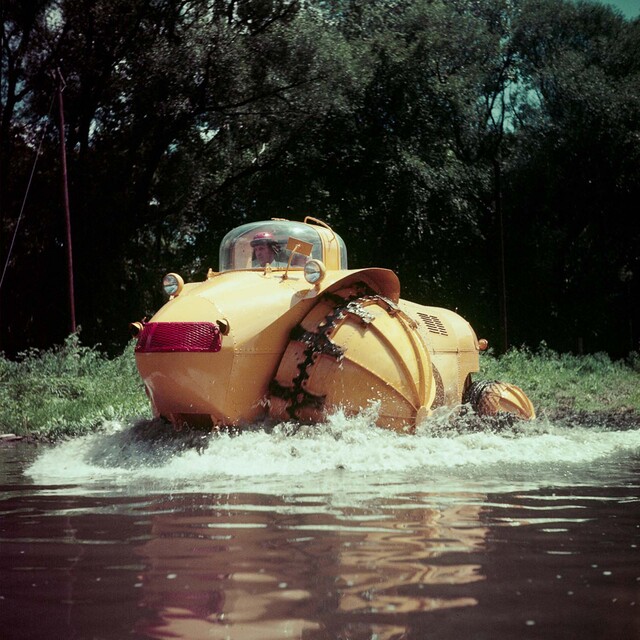
Despite the promising features of the Rhino, Aghnides’ attempts to sell the vehicle to the military were unsuccessful. One of the main concerns raised by military officials was the vehicle’s inflatable wheels, which they feared could be punctured by gunfire, rendering the Rhino useless in combat situations. Though the Rhino demonstrated impressive performance in the field, it was ultimately not seen as a practical solution for military use during the 1950s.
Although the Rhino never found a place in the military, its testing results and the story of its creation remain a testament to the boldness of its inventor. It is a reminder of a time when inventors dared to think outside the box, pushing the boundaries of what was possible in engineering.
Testing the Rhino: Photos and Videos from the 1950s
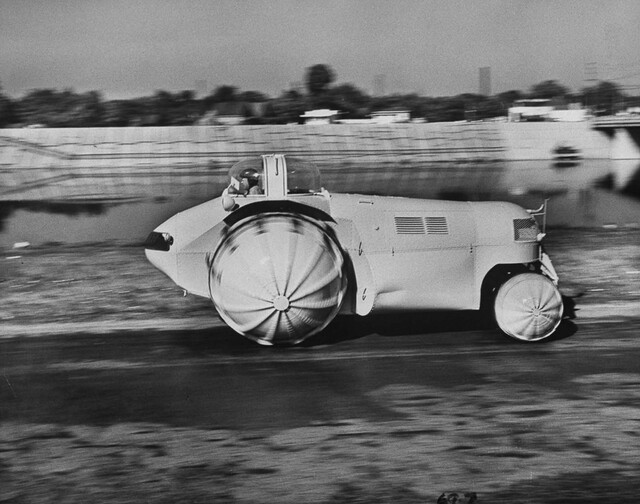
While the Rhino never went into mass production, there are still many photos and videos documenting its testing. These visuals showcase the vehicle’s capabilities on different types of terrain and its impressive ability to float on water. The images of the Rhino trudging through sand dunes, navigating muddy fields, and crossing rivers offer a rare look at an experimental vehicle ahead of its time. These photographs not only capture the beauty of the vehicle but also highlight its remarkable engineering.
For automotive enthusiasts and history buffs alike, these images represent a fascinating glimpse into the world of experimental vehicles. The Rhino may not have become a commercial success, but its story continues to captivate and inspire people interested in the boundaries of innovation.
Legacy and Final Thoughts: The Rhino’s Place in Automotive History
Though the Rhino never became a commercial success, its legacy endures in the annals of automotive history. It was a vehicle ahead of its time, designed to solve the practical problem of navigating rough, uncharted territories. In an era where all-terrain vehicles were still in their infancy, the Rhino’s unique blend of amphibious capabilities, massive wheels, and low center of gravity made it a trailblazer in the field of off-road engineering.
Today, the Rhino stands as an iconic example of experimental vehicle design. While it may not have been adopted for military use or commercial production, its ingenuity and ambition paved the way for future innovations in off-road and all-terrain vehicles. The Rhino remains an enduring symbol of how one man’s vision can lead to groundbreaking, albeit short-lived, innovations in automotive history.
Video
Watch 10 Most Unusual Vehicles to see some of the most bizarre and fascinating vehicles ever created. A must-watch for automotive enthusiasts!



